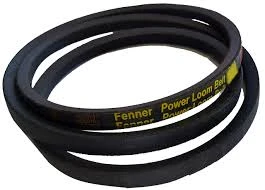- Arabic
- French
- Russian
- Spanish
- Portuguese
- Turkish
- Armenian
- English
- Albanian
- Amharic
- Azerbaijani
- Basque
- Belarusian
- Bengali
- Bosnian
- Bulgarian
- Catalan
- Cebuano
- Corsican
- Croatian
- Czech
- Danish
- Dutch
- Afrikaans
- Esperanto
- Estonian
- Finnish
- Frisian
- Galician
- Georgian
- German
- Greek
- Gujarati
- Haitian Creole
- hausa
- hawaiian
- Hebrew
- Hindi
- Miao
- Hungarian
- Icelandic
- igbo
- Indonesian
- irish
- Italian
- Japanese
- Javanese
- Kannada
- kazakh
- Khmer
- Rwandese
- Korean
- Kurdish
- Kyrgyz
- Lao
- Latin
- Latvian
- Lithuanian
- Luxembourgish
- Macedonian
- Malgashi
- Malay
- Malayalam
- Maltese
- Maori
- Marathi
- Mongolian
- Myanmar
- Nepali
- Norwegian
- Norwegian
- Occitan
- Pashto
- Persian
- Polish
- Punjabi
- Romanian
- Samoan
- Scottish Gaelic
- Serbian
- Sesotho
- Shona
- Sindhi
- Sinhala
- Slovak
- Slovenian
- Somali
- Sundanese
- Swahili
- Swedish
- Tagalog
- Tajik
- Tamil
- Tatar
- Telugu
- Thai
- Turkmen
- Ukrainian
- Urdu
- Uighur
- Uzbek
- Vietnamese
- Welsh
- Bantu
- Yiddish
- Yoruba
- Zulu
10 сар . 21, 2024 15:39 Back to list
Understanding Timing Pulleys and Belts for Efficient Mechanical Systems
Understanding Timing Pulleys and Belts Essential Components in Mechanical Systems
In the realm of mechanical engineering, efficiency and precision are paramount. One of the critical components that contribute significantly to these aspects is the timing pulley and belt system. This system is widely utilized across various applications, from automotive engines to industrial machinery. Understanding its functionality, construction, and advantages is vital for engineers and technicians alike.
What are Timing Pulleys and Belts?
Timing pulleys and belts are integral parts of synchronous belt drives. Unlike traditional V-belts that rely on friction to transmit power, timing belts engage with toothed pulleys. This design ensures that the movement of the belt is synchronized with the rotation of the pulleys, thus maintaining precise timing between connected components.
A timing belt is typically made from durable materials, such as rubber or polyurethane, and contains reinforced fibers for added strength. Its surface features teeth that fit into corresponding grooves on the pulley. This tooth-and-groove design not only enhances grip but also minimizes slippage, allowing for accurate and efficient power transmission.
Applications of Timing Pulleys and Belts
Timing pulleys and belts are used in a myriad of applications. One of the most common uses is in automobile engines, where they synchronize the crankshaft and camshaft movements. This synchronization is critical for optimal engine performance, ensuring that valves open and close at the correct times during each engine cycle.
In the industrial sector, timing belts are prevalent in conveyor systems, automated machinery, and robotics. These systems require precise movement to ensure proper functionality and to avoid operational discrepancies. Timing belts’ ability to provide consistent and predictable motion makes them an ideal choice for these applications.
Advantages of Using Timing Pulleys and Belts
timing pulley and belt

The use of timing pulleys and belts offers several advantages over traditional power transmission methods. One significant benefit is reduced noise levels. The engagement of the teeth minimizes slippage and vibration, resulting in quieter operation, which is especially important in environments where noise pollution is a concern.
Another advantage is the increase in efficiency. Timing belts can transmit power with minimal loss due to their synchronous design. This efficiency translates into lower energy consumption, which can lead to cost savings over time. Moreover, the elimination of slippage means that timing belts maintain consistent performance and timing throughout their operating life.
Timing belts also require less maintenance compared to other belt types. The absence of lubrication needs and lower wear rates due to fewer common contact points contribute to their longevity. This reliability can significantly reduce downtime and maintenance costs in industrial settings, making them an economically advantageous option.
Challenges and Considerations
Despite their numerous advantages, timing pulleys and belts are not without challenges. Proper alignment is crucial for optimal performance; misalignment can lead to uneven wear and premature failure. Additionally, external factors such as dust, dirt, and contaminants can affect the lifespan of the belt. Thus, regular inspections and maintenance are essential.
Moreover, timing belts have specific operating limits. While they are highly efficient, they may not be suitable for applications requiring extreme torque or high-speed operation beyond their rated capacity. Understanding these limitations is critical for selecting the right components for a specific application.
Conclusion
In summary, timing pulleys and belts are vital components in many mechanical systems, offering an efficient, reliable, and low-maintenance solution for synchronous power transmission. Their unique design allows for precise control and minimal energy loss, making them an ideal choice in various industries, from automotive to manufacturing.
As technology advances, the materials and designs of timing belts and pulleys continue to evolve, enhancing their performance and expanding their applications. For engineers and technicians, comprehending the mechanics of timing pulleys and belts is essential to optimize machinery performance and ensure operational efficiency. Future innovations are likely to make these systems even more effective, further solidifying their role as indispensable tools in modern engineering.
-
Korean Auto Parts Timing Belt 24312-37500 For Hyundai/Kia
NewsMar.07,2025
-
7PK2300 90916-T2024 RIBBED BELT POLY V BELT PK BELT
NewsMar.07,2025
-
Chinese Auto Belt Factory 310-2M-22 For BMW/Mercedes-Benz
NewsMar.07,2025
-
Chinese Auto Belt Factory 310-2M-22 For BMW/Mercedes-Benz
NewsMar.07,2025
-
90916-02660 PK Belt 6PK1680 For Toyota
NewsMar.07,2025
-
drive belt serpentine belt
NewsMar.07,2025

